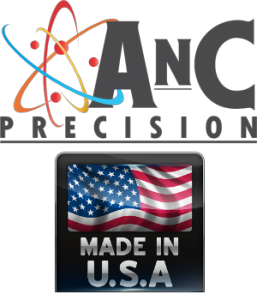History of Sealing Validation in the Plastic Squeeze Tube Industry.
Old habits are hard to break. With major brands spending billions in advertising each year to drive product image and consumer behavior, it is shocking at times to discover the lack of quality control inside the production process of the package.
AnC, using its knowledge in aerospace engineering and hundreds of years of experience, is introducing a new Quality Control Measure in the industry that is set to increase profits in production businesses, small and large, by simply identifying new baseline standards in tube processing and providing advanced analytic’s and process trends to help eliminate waste of resources.
Current Standards of Production
1) The Tube industry has not kept up or taken advantage newer technologies.
- This includes production machines, filling and sealing machines. Many still use outdated technology, like chain drives, sprockets, air cylinders and using minimal electronic controls.
- It has not kept up with the adoption of standards. EU has adopted tube standards but the US has no standards on tube sealing.
2) The industries equipment for testing and evaluation of the tube is just as outdated, except the equipment that is manufactured by AnC Precision. What little test equipment that is out there they do not fully tests the tube and are primitive in design. AnC is the only equipment that records findings using printers, memory sticks, and Ethernet.
3) Tubes received from tube manufacturers have minimal or no lot testing on the product. If testing is done it is mostly superficial, i.e. they may measure the wall thickness, or look at the number of layers. We know of no company that has adopted a true incoming product evaluation. They do not test the ability to seal nor the parameters that are required to seal the tube. In most cases the tubes are not found to be defective until they are run on the production line; too little, too late.
Product Testing during the Filling Process :
1) As mentioned above the tube ability to seal is not evaluated until it is filled and sealed on a production line. In some cases a production run is interrupted to do a test new incoming product. Typically tubes that are filled and sealed on a production line are tested at the end of the line by pressing on the tube and looking for leaks. This method is not scientific as each test person may exert different pressure. If it is automated (often with the aid of an air) it still does not accurately evaluate the quality of the seal.
Potential problems that can occur if accurate measurements are not available.
For example, let’s say a particular tube has a True burst pressure test of 24 psi as measured at the inside of the tube using AnC Instrument (PTS-100).
1) If a mechanical pressure (air cylinder) test is exerted on the tube that creates 22 psi we have a tube that passed its QC with only 2 psi to spare. It did pass but it is very close to failing and any small changes in the process (temperature, pressure, time or even a small change in tube thickness) may cause it to fail. Once it failed no one will know why as they did not know that it was running very close to the failure point.
2) Continuing with this example a tube has a burst pressure of 30 psi. and once again has a mechanical pressure test exerted on the tube of 22 psi. The safe region has increased by 8 psi. The likely hood of small manufacturing changes (temperature, pressure, time) will have lessor effect on the production run.
3) The purpose of this example is to illustrate the importance of knowing and monitoring the exact values that the tube will burst. The corresponding test pressure will provide a better understanding of the product that you are producing and providing a more consistent reliable manufacturing process.
4) The only instrument on the market which measures and records all of the parameters of the sealing process of the tube is the AnC Precision Unit(s).
The Plastic Squeeze Tube industry will eventually adapt the following model:
1) The Tube manufacturer will be required to provide test data on the tubes basic parameters to seal (temperature, pressure, dwell time etc.) ,and the values at which the tube bursts (i.e.; 30 psi). This is done using two machines:
- Tube Sealing Machine (TS-100) the sealing values are determined by the Tube Manufacture (temperature, pressure, dwell time, etc.)
- The sealed tube is then tested for its burst pressure using a true pressure test instrument such as thePTS-100. (Burst pressure psi.)The test data that has been collected is then passed on to the buyer (Tube Filling Company) and if it is accepted by the buyer it can be shipped.
2) Once the product is received at the Tube Filling Company in the US it once again subject to incoming test and evaluation using AQL lot sampling and the same methods and instrumentation as used by the Tube Manufacturer in the receiving inspection process (1a and 1b above).
3) This test data that has been collected is then used to set up the Production Line (temperature, pressure, dwell time, etc.).
4) After passing the incoming acceptance test it can now be evaluated for Maximized performance on the production line.
5) The product has been accepted and is ready for filling. Once the tube starts down the production line is set up correctly and is producing reliably filled tubes that meet their manufacturing criteria.
6) In this model the tube is tested along the entire way and there is insurance of no surprises with loss during production.

